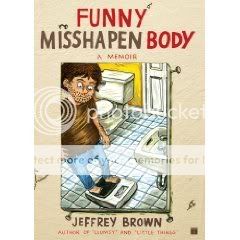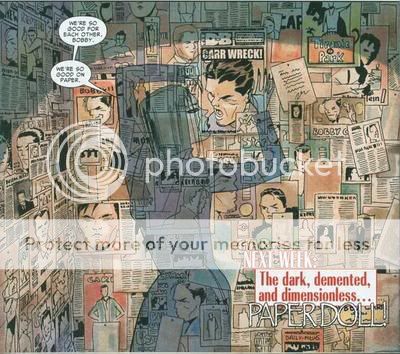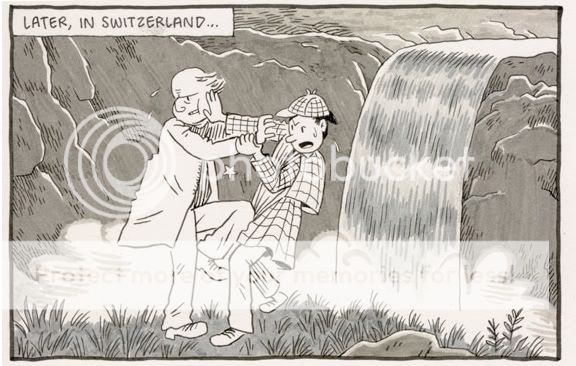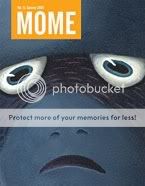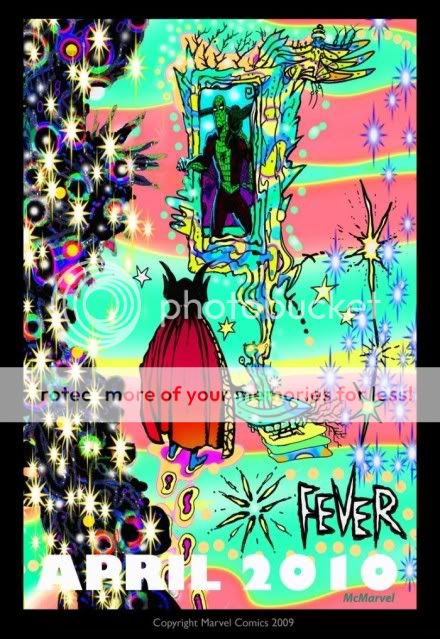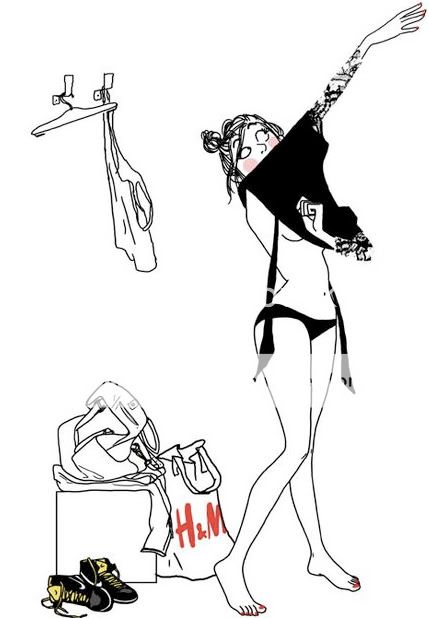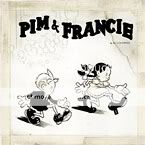In the long list of things that Nigel Tufnel was right about, “there’s a fine line between stupid and clever” is right up near the top. Which side of that line Paranormal Activity falls on has been bedeviling me since I (finally) saw it Halloween afternoon. Just by way of a for instance, while we chatted about the film in the lobby, I complained to the folks I saw it with about the demonologist who never barked. If the filmmakers were never going to actually put him in the movie, why introduce the concept in the first place? It left me with this weird sensation that either a chunk of the movie had gone missing, or the filmmakers just didn’t have that much of a grasp on what they were doing. But then my wife theorized that maybe that truncated feeling was the point–the movie gets you believing that this demonologist will show up “in a few days,” so when the end comes and he’s still nowhere in sight, it’s all the more shocking. Which got me to thinking about how I’d spent most of the movie believing the climax would come on the night of October 31st, only for the proceedings to stop short several weeks before then. Then there was my brother’s paranormal-buff fiancee, who “explained” that this kind of haunting had to be “a demonic” rather than the work of a (formerly) human entity, so they needed to address this (the psychic telling them to hire a demonologist) without actually allowing it to fix the problem (Micah puts off calling him, and when Katie finally does, he’s out of town). You could probably go back and forth about all the other loose ends–the house fire, Katie’s sister, the haunting of Diane back in the ’60s–in a similar fashion.
Ditto the believability of the two main characters. I found Micah’s desire to get to the bottom of the haunting rather than wave the white flag, even when this ran counter to Katie’s express wishes, a totally credible trait; amusingly, my wife found his behavior so dickish as to shatter her suspension of disbelief. On the flip side, I thought the seams really showed on Katie’s performance during scenes where she was obviously required to express a certain sentiment or say a certain line; The Missus found her compelling and her story sad. That part we agree on, at least, which is why this post analogizing the story arc of Paranormal Activity to domestic violence has lodged itself in my head the way it has. Overall, again, it’s difficult to say whether the shortcomings of the characters are simply the fault of them as characters or the result of poor choices by the filmmakers.
And the scares? As I alluded to the other day, the film shares with The Hurt Locker a structural advantage: The second you’re placed in a certain environment (a mission/bedtime), you in the audience are prepped to have the shit scared out of you (by an explosion/by the haunting). Both films smartly let you do most of the work for them, letting you sit there, hearing the pounding of the blood in your ears, straining toward the screen to see what happens yet pushing back in your chair dreading it as well. Paranormal has the added advantage of doing for bedrooms what Psycho did for showers and Jaws did for beaches, transforming a familiar environment into a locus of horror–how much of the “scariest movie ever” buzz simply stems from people not being able to avoid their own bedrooms and therefore recalling the movie whether they want to or not? Ditto how deftly it works with the uncomfortable idea of being watched while you sleep–by a camera, by some malevolent entity, and (we’ll get to this again later) even by someone you love.
The difference between the two set-ups, of course, is that Kathryn Bigelow pretty much delivers something memorable every time, from world-class action sequences to gorgeous scenery to those haunting extreme close-ups of falling shells or shockwaves. Director Oren Peli, on the other hand, can really only show you a static shot of a bedroom or a shakicam shot of a living room, in night vision; at times, the “action” disappears into the darkness where you’re vaguely aware there’s something going on–the tug of war between Micah and the demon after it drags Katie out of bed is the best example–but can’t make it out. Once again, is this a deft use of parametric filmmaking or amateur hour?
With all these unsettled questions, there’d be no way I’d feel comfortable proclaiming this “the scariest movie ever made” even if I were inclined in that direction to begin with. Which (the moment you’ve been waiting for!) I’m not. With a couple of exceptions, there was nothing here you couldn’t get out of a particularly well done episode of A Haunting; in fact I can think of a moment from that series that scared me and The Missus worse than anything here. Because of the film’s abrupt ending, the sense of relentless pacing and crescendoing terror that characterizes (here it comes) The Blair Witch Project is absent. With it goes the gut-wrenching grinding down of the protagonists–Katie can collapse and cry on the floor all she wants, there’s still nothing here that approaches that desperate conversation between Heather and Mike as they droolingly rattle off their favorite foods, knowing they’ll probably never taste them again. There’s no sense that Micah and Katie have been driven to that desperate a strait, even after the thing yanks her out of bed and bites her.
A big part of the problem is that just like Micah (and Katie, prior to her final under-the-influence decision to stay), we in the audience can’t help but associate the haunting with the house. That’s what a million haunted-house movies and stories have taught us to do since time immemorial. Even ones that aren’t predicated on the location still tend to make tremendous use of it–cf. The Exorcist and how inseparable your memories of it are from that freezing cold, harshly illuminated bedroom. Paranormal Activity is similar: It does such a good job of violating domestic tranquility and transforming the bedroom, a place of comfort and refuge, into a horrorshow, that you can’t help but want to scream at them “Check into a hotel and hang out in the lobby overnight! Go to a Walgreen’s!” As hard as the movie works to establish that there’s no escape, it also never shows them trying and failing to do so (budget limitations, perhaps?), so we’re left wondering what-if and letting the air out of the scare. Heather, Josh, and Mike are lost in the woods; Micah and Katie could go grocery shopping or visit his mom or catch a flight to Hawaii if they wanted.
But all of this just keeps the movie from being an awesome stone-cold classic. I think it’s still a fine film, and largely for the same reasons it’s not a great one. All that ambiguity about the characters, the loose plot threads, whether or not they could have escaped–that’s still very interesting, even if you can’t nail it all down as a point in the film’s favor for certain. I find myself thinking “What if he’d done this? What if she’d tried that?” It’s giving me something to chew on.
And while nothing here genuinely freaked me out once I was in the comfort of my own home–something Blair Witch, The Exorcist, The Shining, and The Ring all managed to pull off, just to name a few–nor really traumatized me during the viewing–all those movies, The Texas Chain Saw Massacre, The Birds, Psycho, Hostel, The Descent, Hellraiser, Hellbound, etc etc–I can say that there were a few world-class horror images in here. Not the grunts and footprings, not the mysterious photograph, not the ouija board, not the shattered photograph, at least not for me. What got me were two things. For some reason, the lights being flipped on and off really got me. They weren’t flickering–something was walking around turning lights on and off. Not only was something else present in the house, it was basically using the house the way we would–only it was nothing like us in nature or intent. I dunno, that creeped me out pretty bad.
But best/worst of all were the two scenes where somnambulist Katie got out of bed, turned to face it, and just…stood there, for hours and hours. That’s pure automaton Freudian uncanny, of course, and a monumental horror-image par excellence. And it’s reminiscent of the original-edit ending of Blair Witch to boot–to this day the scariest thing I’ve ever seen in a movie–because there’s just no reason for it to be happening. It hits all my buttons, hard, as does the resolution of that first scene, where she walks away and Micah finally wakes up, following her down and out into the backyard, where she’s just swinging in a swing. These are actions that really have no inherent emotional or psychological content whatsoever. They’re purely neutral. But when you have no idea why someone’s doing them, even totally neutral actions can become sinister, almost intolerable. That much I’m sure about.
